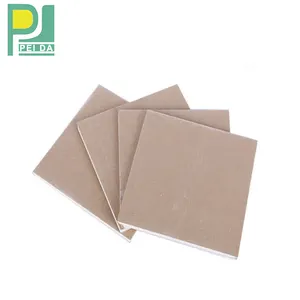Introduction to Kenya Plasterboard
Kenya plasterboard, a versatile building material, is essential for modern construction, particularly in creating interior walls and ceilings. This gypsum-based panel is renowned for its ease of installation and adaptability to various design requirements. Its application extends across residential, commercial, and industrial projects, each demanding specific plasterboard types to meet diverse structural and aesthetic needs.
Types and Applications
The range of plasterboard options available caters to different applications. Standard plasterboards are widely used for general construction purposes, while specialized types such as fire-resistant plasterboard or water-resistant plasterboard are utilized in areas requiring additional protection against elements. For acoustic control, soundproof plasterboard is the go-to choice, significantly reducing noise transmission and enhancing privacy.
Features and Materials
Kenya plasterboard is composed of a gypsum core pressed between two thick sheets of paper. Advanced varieties may include additional materials like viscoelastic or ceramics to improve functionality, such as sound insulation or moisture resistance. The inherent features of plasterboard make it a preferred choice for creating smooth, paint-ready surfaces and for its lightweight yet durable nature, which simplifies handling and installation processes.
Advantages of Plasterboard
The advantages of using gypsum plasterboard are manifold. Its installation is less labor-intensive compared to traditional wall-building methods, offering a quicker turnaround on construction projects. Plasterboard's versatility allows for it to be cut and shaped to fit various architectural designs, while its smooth finish provides an ideal base for decorative treatments. Additionally, certain plasterboards come with enhanced properties such as moisture resistance, which is crucial for longevity in humid conditions.
Installation and Finishing
For a seamless finish, the joints between plasterboard panels are filled with a joint compound and smoothed out. Drywall jointing tape is then applied to hold the compound in place, preventing any potential cracking. For corners and edges, drywall edge tape ensures a clean, sharp finish. These materials are crucial for achieving a professional look and maintaining the integrity of the wall or ceiling over time.
Maintenance and Repair
In the event of damage, the repair process for plasterboard is straightforward. A range of products, including filler for drywall and various tapes like sticky drywall tape, are available to facilitate efficient and effective repairs. For areas prone to water exposure, replacing damaged sections with moisture resistant drywall can prevent future issues, safeguarding the property against water and mold damage.











































 浙公网安备 33010002000092号
浙公网安备 33010002000092号 浙B2-20120091-4
浙B2-20120091-4